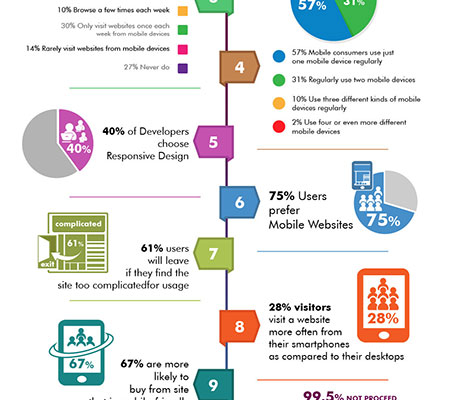Keen To Discover How Website Style Has Transformed Over Time? Dive Into The Advancement From Simplicity To User-Focused Experiences
Keen To Discover How Website Style Has Transformed Over Time? Dive Into The Advancement From Simplicity To User-Focused Experiences
Blog Article
Written By-Booker Hyldgaard
In the past, sites were easy and concentrated on information. Navigation was straight, and design was for desktop computers. Currently, individual experience is essential. Information guides designs for simple navigation. Receptive designs match various gadgets. Today, dark setting decreases strain, and minimal food selections enhance navigating. Interactive attributes involve customers, and bold visuals stick out. AI assimilation boosts engagement. See just how design has developed to boost your on-line trip.
Early Days of Website Design
In the very early days of web design, simpleness reigned supreme. Sites were fundamental, with restricted shades, fonts, and layouts. The focus got on giving information as opposed to flashy visuals. Individuals accessed the net with slow-moving dial-up connections, so speed and capability were essential.
Navigating menus were straightforward, generally located at the top or side of the web page. Suggested Online site were created for home computer, as mobile surfing wasn't yet prevalent. Content was king, and designers prioritized very easy readability over complicated layout components.
HTML was the main coding language utilized, and developers needed to function within its restrictions. Animations and interactive functions were very little contrasted to today's standards. Sites were static, with little vibrant material or individualized individual experiences.
Increase of User-Focused Layout
With the evolution of internet site design, a shift towards user-focused layout concepts has actually ended up being progressively noticeable. Today, creating websites that prioritize customer experience is crucial for engaging site visitors and attaining organization goals. User-focused layout includes understanding the requirements, choices, and habits of your target audience to customize the internet site's format, content, and features appropriately.
Designers now perform extensive study, such as customer studies and functionality screening, to gather understandings and responses straight from customers. This data-driven approach assists in developing intuitive navigation, clear calls-to-action, and aesthetically attractive user interfaces that reverberate with site visitors. By positioning the customer at the facility of the layout procedure, internet sites can provide a much more customized and satisfying experience.
Responsive design has likewise become a key element of user-focused design, guaranteeing that web sites are optimized for different devices and screen sizes. This adaptability enhances ease of access and use, satisfying the diverse ways customers connect with internet sites today. In essence, the increase of user-focused layout represents a change towards creating digital experiences that focus on the demands and expectations of completion individual.
Modern Trends in Website Design
Discover the most up to date patterns shaping website design today. One prominent pattern is dark mode layout, supplying a smooth and modern appearance while minimizing eye stress in low-light atmospheres. One more essential trend is minimalist navigating, simplifying menus and enhancing customer experience by focusing on essential elements. Including micro-interactions, such as animated switches or scrolling results, can create a much more engaging and interactive web site. Receptive style continues to be critical, making sure smooth individual experiences across various tools. Additionally, utilizing strong typography and asymmetrical formats can add visual passion and accentuate certain web content.
Incorporating AI modern technology, like chatbots for client support or individualized referrals, boosts customer involvement and improves procedures. Availability has likewise become a substantial fad, with designers prioritizing comprehensive style practices to accommodate diverse user demands. Welcoming sustainability by enhancing internet site performance for speed and effectiveness is one more arising fad in web design. Working together with individual feedback and information analytics to repeat and boost layout constantly is important for staying relevant in the ever-evolving electronic landscape. By accepting these modern-day trends, you can create an aesthetically enticing, straightforward site that resonates with your target market.
Verdict
As you assess the advancement of website style from the early days to now, you can see just how user-focused design has actually become the driving force behind contemporary patterns.
Accept the journey of change and adjustment in web design, constantly maintaining the individual experience at the center.
Stay present with the most up to date patterns and technologies, and never stop progressing your method to produce aesthetically magnificent and user-friendly web sites.
Develop, adapt, and produce - the future of web design remains in your hands.
